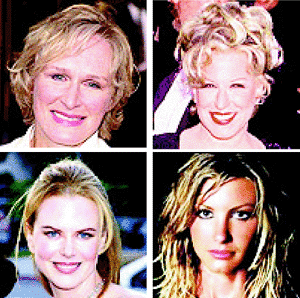Camera technology pays off with Oscar
By RICHARD BENKE
ASSOCIATED PRESS WRITER
ALBUQUERQUE, N.M. — In 1988, Lily Tomlin and Bette Midler played dual roles in “Big Business” as two sets of twins, leaving audiences guessing how the filmmakers juggled the foursome so seamlessly.
In 1996, Michael Keaton was amazingly cloned over and over again in Harold Ramis’ “Multiplicity.”
This year, tech wizard Bill Tondreau won the Oscar for 25 years of refining robotic motion-control software that helped make those films and others like “Peter Pan,” “The Matrix” and “Lord of the Rings.”
The software records even the slightest movement of a camera on its initial shot, so that subsequent shots controlled by the software repeat exactly those movements. This allows multiple film overlays that perfectly coordinate actors’ motion with the background – so “Peter Pan” children barely lift a finger and fly, “Matrix” cyber-warriors wall-walk and Hobbits battle computer-designed monsters.
“The reaction to this thing is just amazing – they just go ga-ga,” Tondreau said at his chip- and circuitry-strewn laboratory in Albuquerque.
Richard Edlund, chairman of the academy’s science-technology awards committee, said Tondreau’s refinements made his know-how “hard to beat.”
“Ninety-five percent of the industry is using his software,” Edlund said.
In “Multiplicity,” Ramis said, “The motion control worked like a charm.”
Keaton, who played four of himself, was able to high-five himself, pass objects back and forth among himselves and blow smoke in one of his faces, Ramis recalled.
It took careful planning. “There was this wonderful, very precise geometry that had to be created for every (motion control) shot,” he said. “It was complicated.”
In “Peter Pan,” children suspended on wires made subtle movements simulating flight, but were mostly stationary. It was the camera that made big swooping motions.
“To make them fly up, the camera will fly down,” Tondreau said.
The filmmakers used a blue background in place of the real background – such as the Darling family nursery in “Peter Pan” – shot with identical camera motion and added later.
The camera rolls on a curved track that has a large up-and-down boom to which a smaller tilt boom arm is attached, augmented by a couple of swivels built into the camera mount.
“‘Lord of the Rings’ is a good current example,” Tondreau said. “The Gollum character … sneaks up on sleeping hobbits. They have a battle where Gollum tries to snatch the ring away from the Hobbit.”
Director Peter Jackson used a stand-in actor for the computer-generated Gollum to interact with the Hobbits on one strand of film, while a second strand has the coordinated background. Then a digital artist painted over the background, leaving a place to put the computer-graphic Gollum, he said.
In the past, with a fixed camera, the background was always stationary in relation to the superimposed action and never looked right.
Recalling the Midler and Tomlin twins in “Big Business,” directed by Jim Abrahams, Tondreau said, “That was one of the first times we used motion control.” That year, he was awarded a plaque from the academy.
In the succeeding 16 years, Tondreau, who moved here in 1988 with his company Kuper Controls, worked up to this year’s Oscar statuette.
As motion control becomes part of the language of film, it’s also used for prosaic necessities like “shooting around” absent actors.
Several times on “Lord of the Rings,” Tondreau said, there were scenes when an actor missed a shot because he had to be elsewhere shooting another scene. So they shot the scene without him using motion control, recording the motion.
“Then, when the other guy was available, they’d play back the same camera motion with him in it – and combine the scenes later. It all worked exceedingly well,” said Tondreau.
As Tondreau refined, Edlund said, each improvement became part of a cumulative impact.
“It became over the years an unbelievably fantastic system … pretty much the ubiquitous system,” Edlund said.






